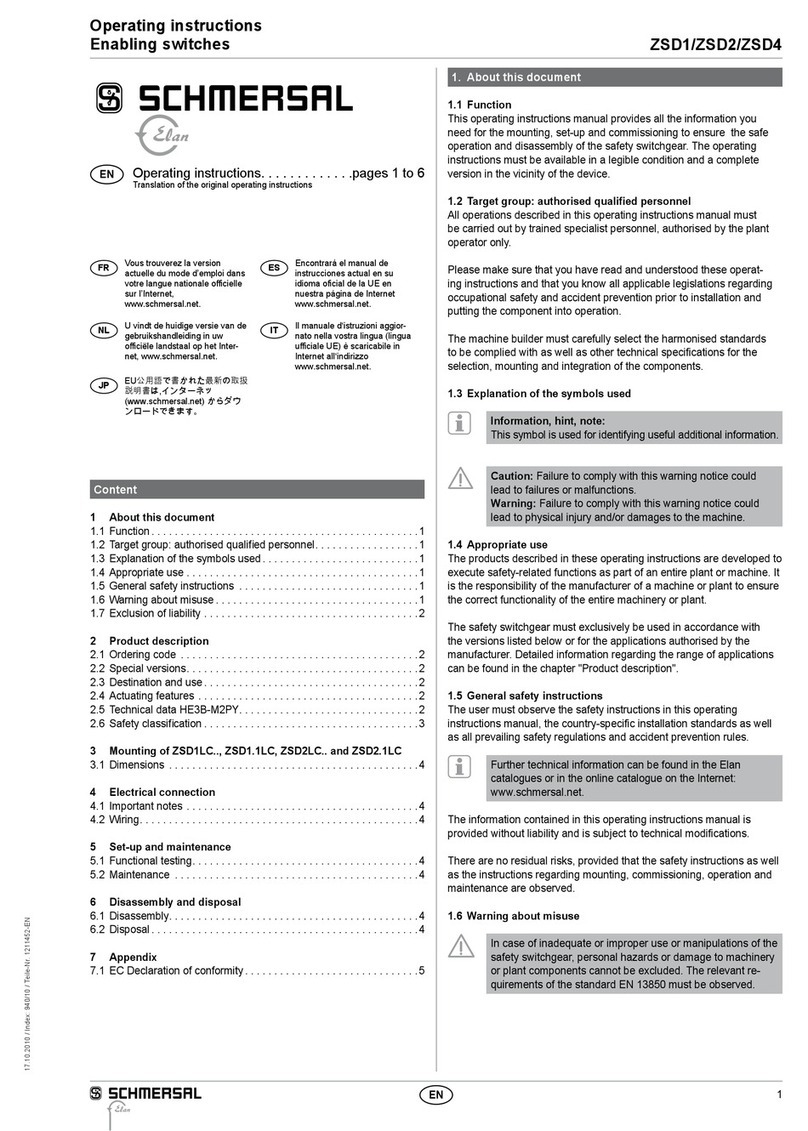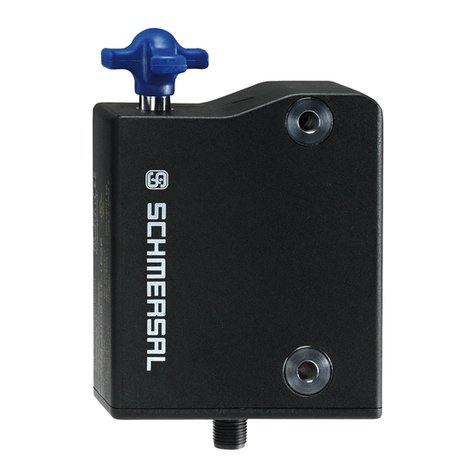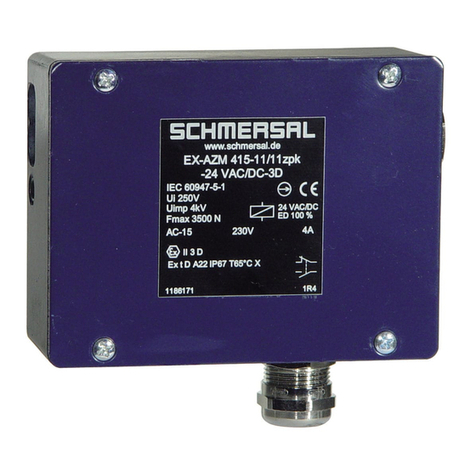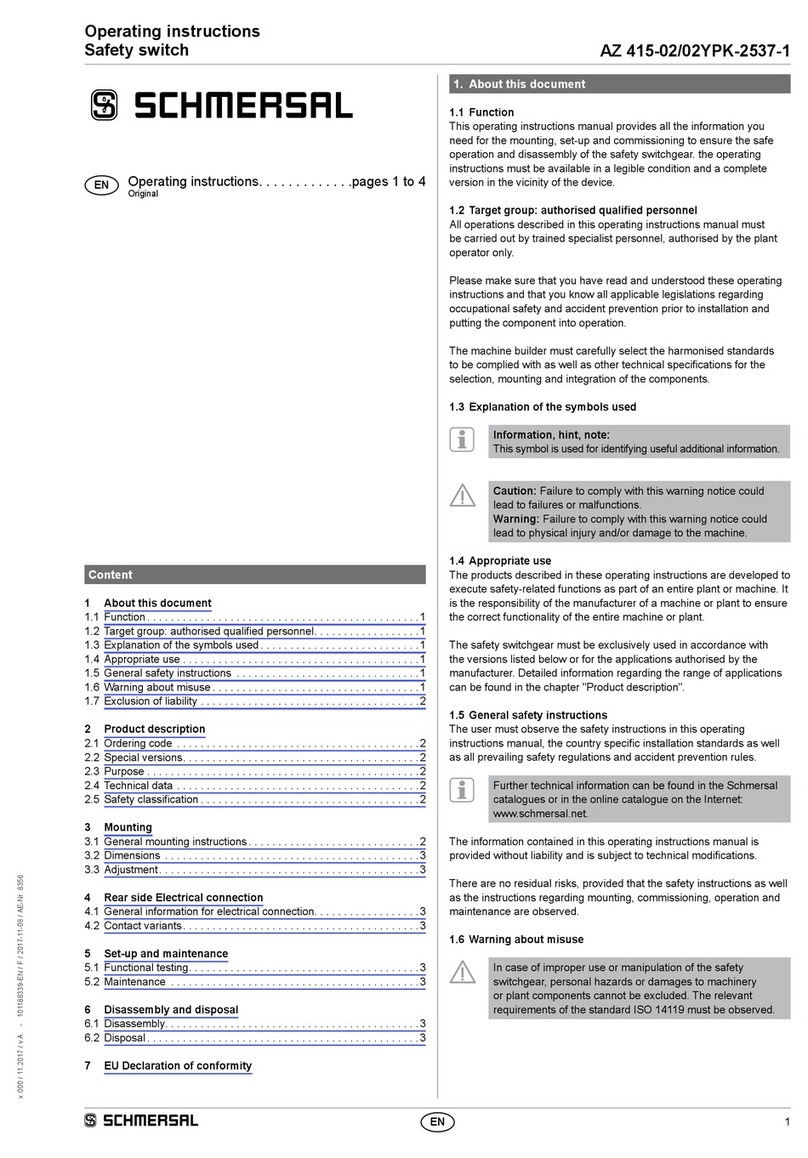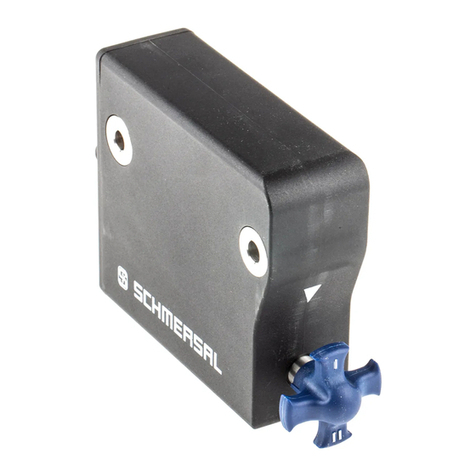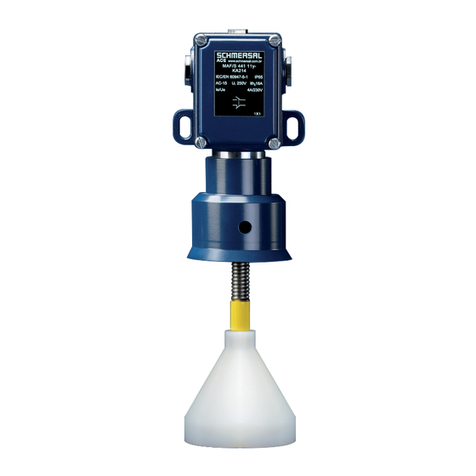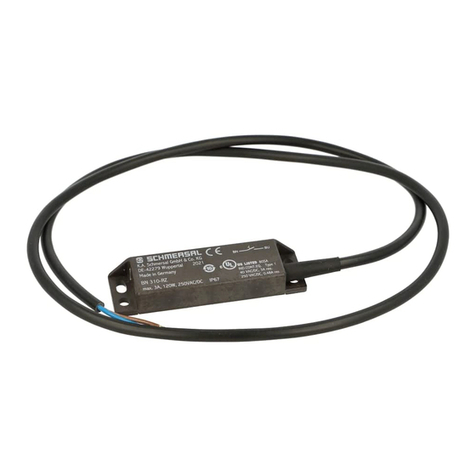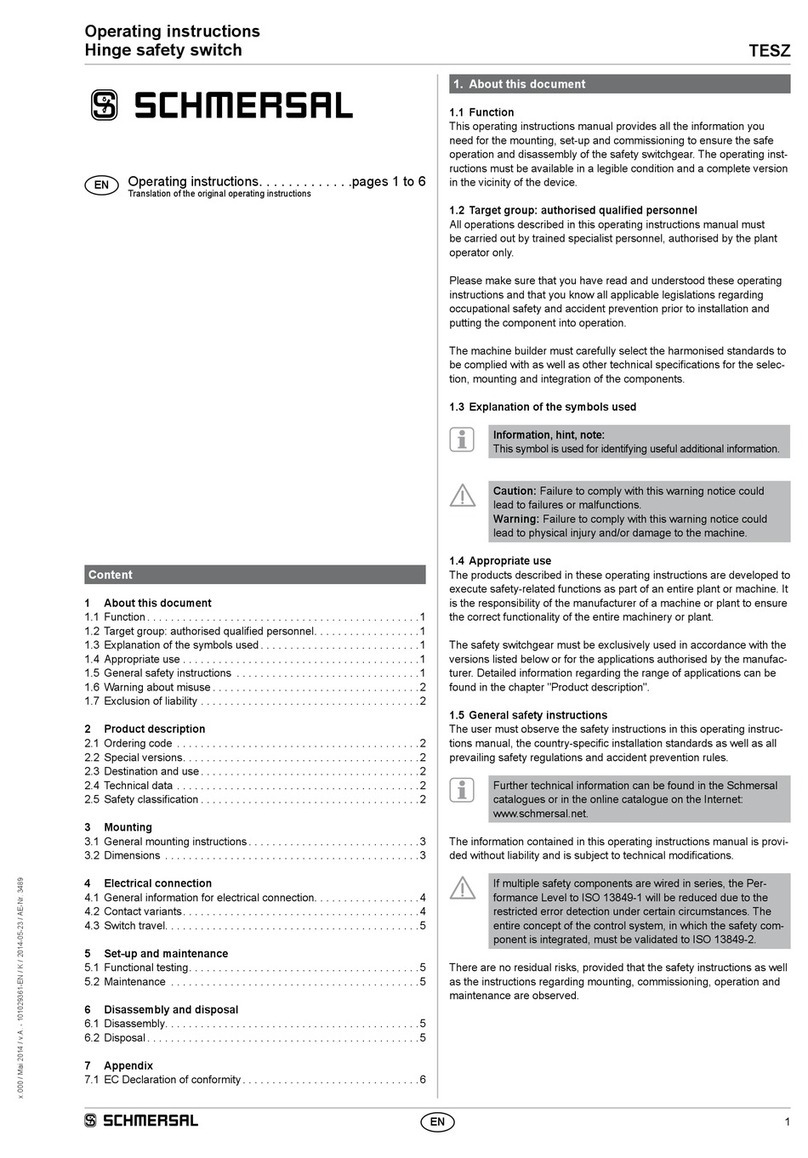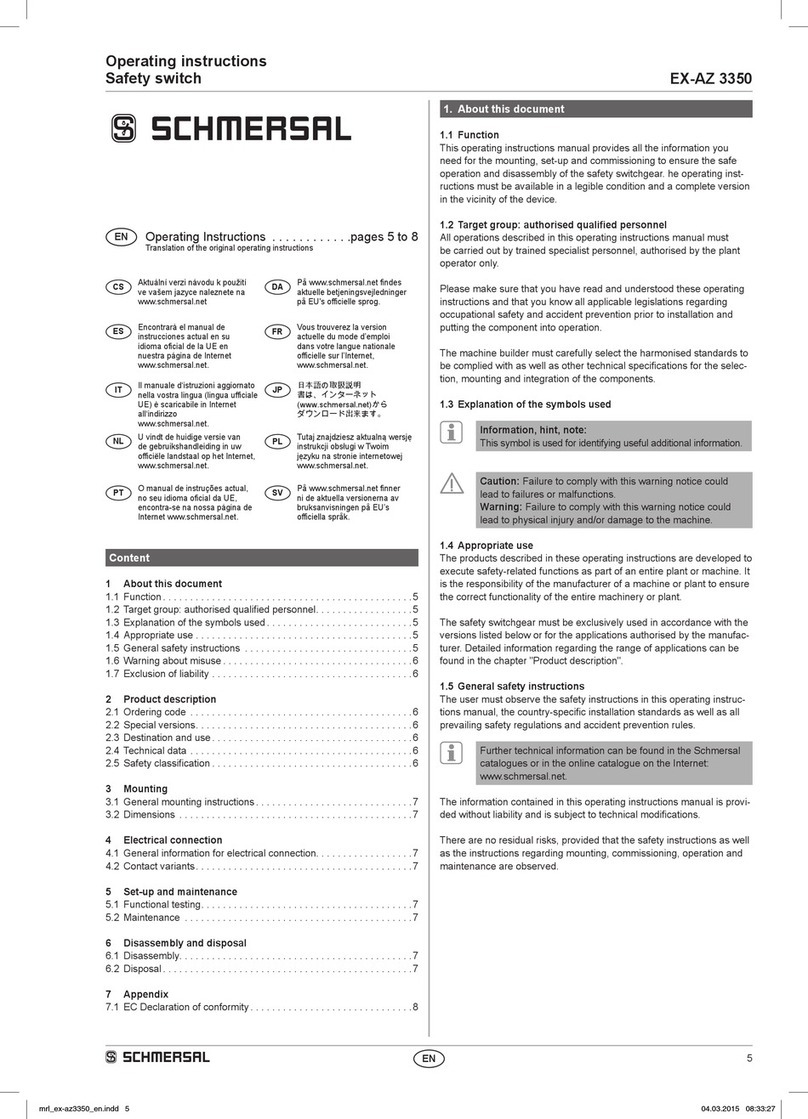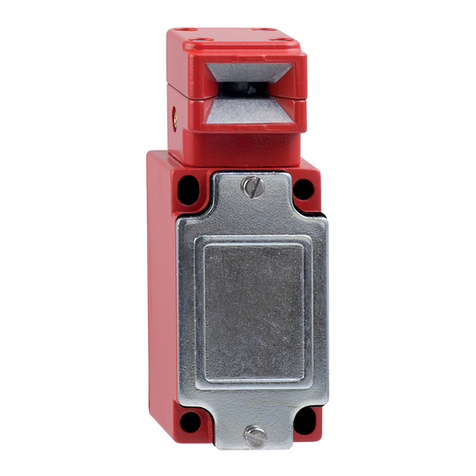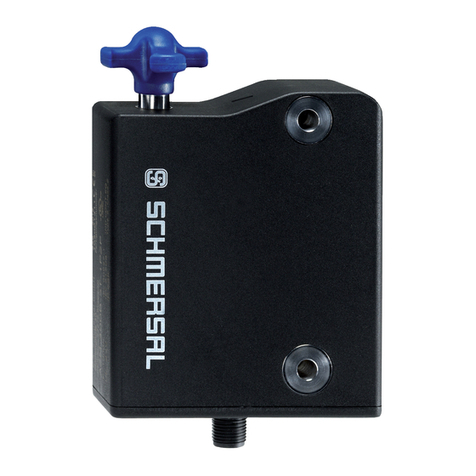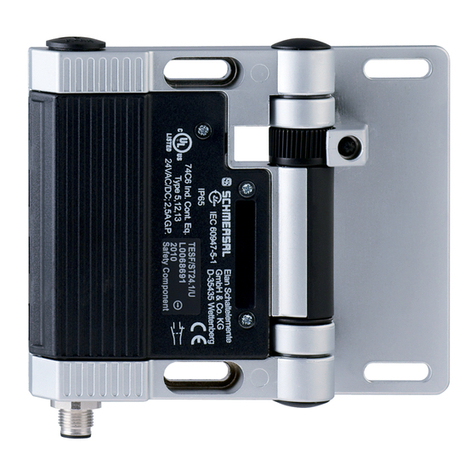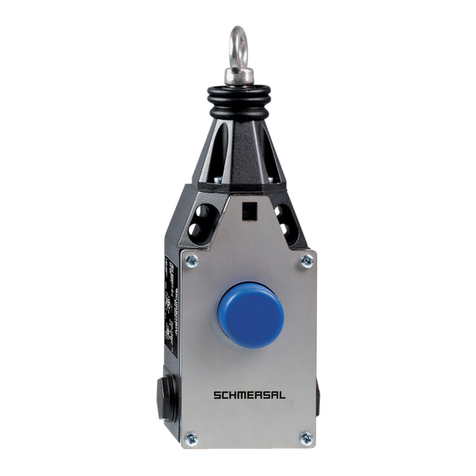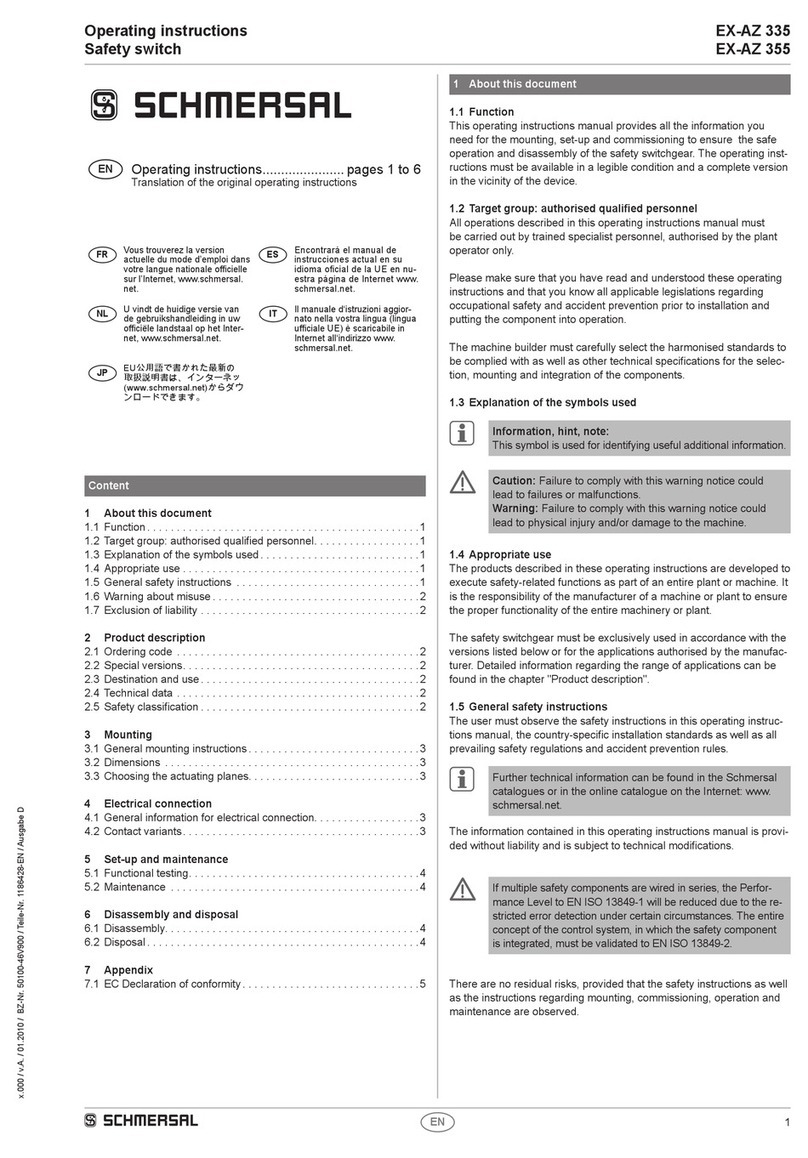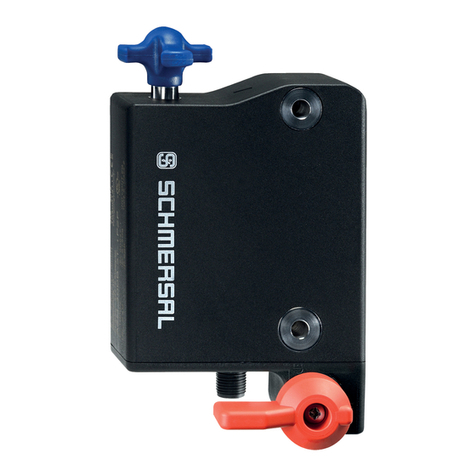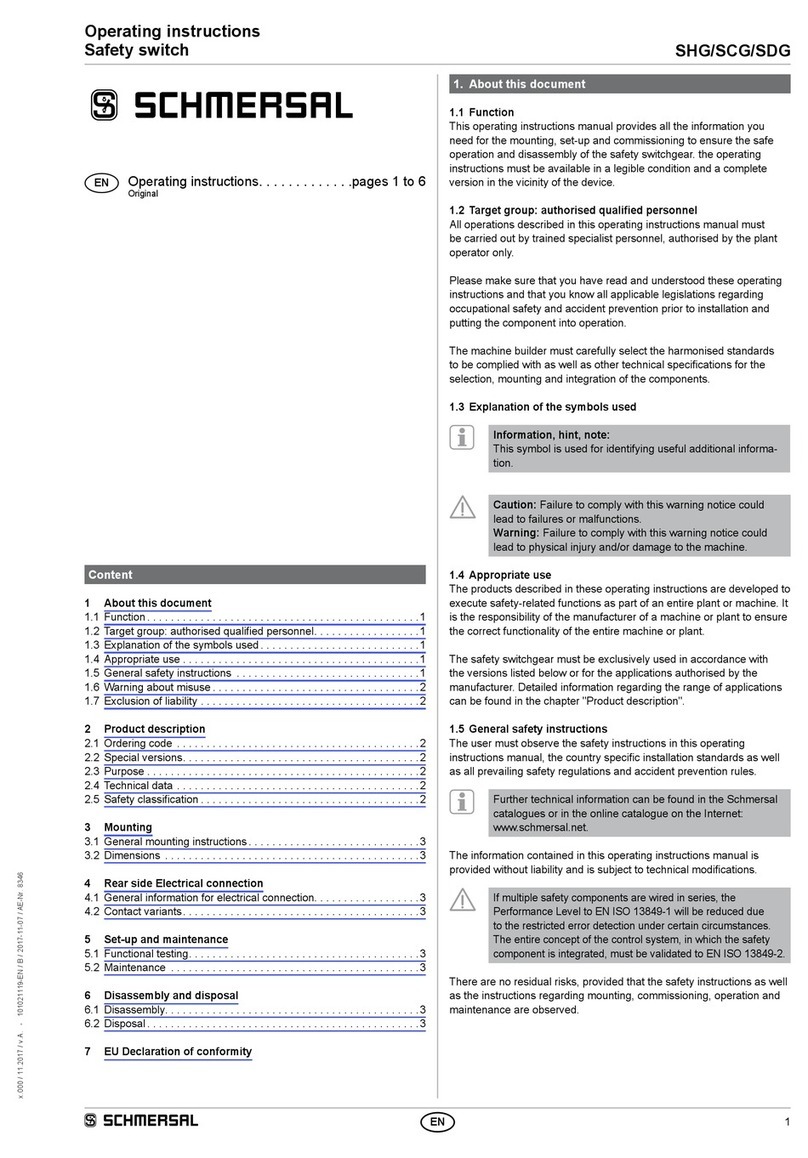
2
Operating instructions
Pull-wire emergency stop switches T3Z 068
EN
1.6 Warning about misuse
In case of improper use or manipulation of the safety
switchgear, personal hazards or damages to machinery or
plant components cannot be excluded.
1.7 Exclusion of liability
We shall accept no liability for damages and malfunctions resulting from
defective mounting or failure to comply with this operating instructions
manual. The manufacturer shall accept no liability for damages
resulting from the use of unauthorised spare parts or accessories.
For safety reasons, invasive work on the device as well as arbitrary
repairs, conversions and modifications to the device are strictly
forbidden, the manufacturer shall accept no liability for damages
resulting from such invasive work, arbitrary repairs, conversions and/or
modifications to the device.
2. Product description
2.1 Ordering code
This operating instructions manual applies to the following types:
T3Z 068-
➀
YR
➁➂
No. Option Description
➀
11 1 NO / 1 NC
22 2 NO / 2 NC
33 3 NO / 3 NC
➁
Reset by pull ring
S Reset by key
➂
without indicator lamp
G with indicator lamp
Only if the information described in this operating instructions
manual are realised correctly, the safety function and therefore
the compliance with the Machinery Directive is maintained.
2.2 Special versions
For special versions, which are not listed in the order code below 2.1,
these specifications apply accordingly, provided that they correspond to
the standard version.
2.3 Purpose
Pull-wire emergency stop switches are used wherever it must be
possible to initiate the emergency stop command from any point on
a machine, equipment or plant. The emergency stop command is
triggered by pulling on the tensioned pull-wire.
The pull-wire Emergency Stop switch has wire-breakage monitoring. On
pulling or breakage of the wire, the NC contacts are positively opened
and the NO contacts are closed. Thereafter the pull-wire emergency
switch can only be manually set back into an operational state.
The entire concept of the control system, in which the safety
component is integrated, must be validated to the relevant
standards.
2.4 Technical data
Standards: IEC 60947-5-1, IEC 60947-5-5, ISO 13850, EN 620
Enclosure: Grey cast iron, painted
Cover: cast iron, enamel finish
Protection class: IP65 to IEC 60529
Contact material: Silver
Contact type: change-over contact with double break,
max. 3 NO and 3 NC contacts
Switching system:
B
IEC 60947-5-1 snap action,
NC contacts with positive break
Connection: screw terminals
Cable section: max. 1.5 mm², min. 0.75 mm²,
solid and stranded wire with conductor ferrules
Cable entry: 2 x M20
Rated impulse withstand voltage Uimp:4 kV
Overvoltage category: III
Degree of pollution: 2
Rated insulation voltage Ui:250 VAC
Thermal test current Ithe:10 A
Utilisation category: AC-15, DC-13
Rated operating current/voltage Ie/Ue:2.5 A / 230 VAC;
6 A / 24 VDC
Max. fuse rating: 6 A gG D-fuse
Required short-circuit current: 1,000 A
Positive break torque: 1.8 Nm
Angle for positive break travel: 32°
Positive break force: 50 N
Actuating force: max. 50 N, (30 N in wire direction)
Ambient temperature: −30 °C ... +90 °C
Mechanical life: 50,000 operations
Indicator lamp: yellow 230 VAC / 5 W,
screw socket BA 15D
Maximum cable length: 2 x 50 m
Features: wire pull and breakage detection
Temperature rating of eld installed conductors min. 90°C.
Use copper conductors only.
2.5 Safety classification
Standards: ISO 13849-1
B10D NC contact: 100,000
Mission time: 20 years
TF
D
10Dopop
op
n
(Determined values can vary depending on the application-specific
parameters hop, dop and tcycle as well as the load.)
If multiple safety components are wired in series, the Performance
Level to ISO 13849-1 will be reduced due to the restricted error
detection under certain circumstances.
3. Mounting
3.1 General mounting instructions
The installation may only be carried out with the system
de-energised and by authorised personnel.
The pull-wire emergency stop switch must be fitted in the middle of
the plant. Four mounting holes are available. Mount the pull-wire
emergency stop switch so that the device can be unlocked and reset
by hand after an emergency stop command. The pull wire must be
installed according to the specifications (Fig. 1).
In accordance with IEC 60947-5-5 (EN 620), the maximum
perpendicular traction force to be exercised on the wire in
order to activate the emergency pull-wire switch is 200 N
(125 N), the maximum deflection is 400 mm (300 mm).
Sufficient space must be provided so that the required
actuating deflection can be reached.
It must be ensured that when tensioned, the wire rope always
follows a straight course and that it remains in the correct
position at all times (including at the redirection point).
External influences (temperature variations, ageing) could
cause the wire rope to be altered.
The information in ISO 13850 must be observed.
